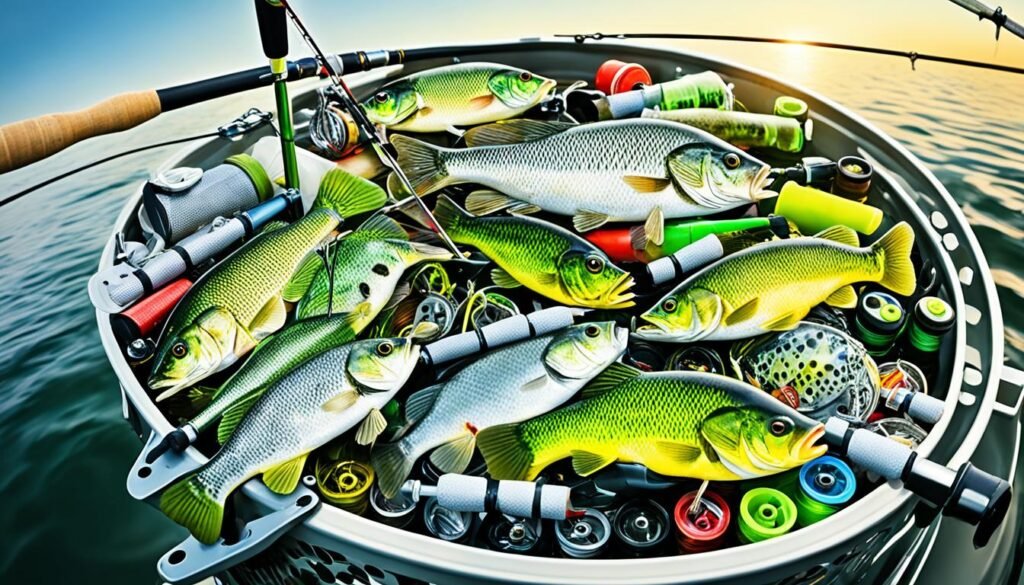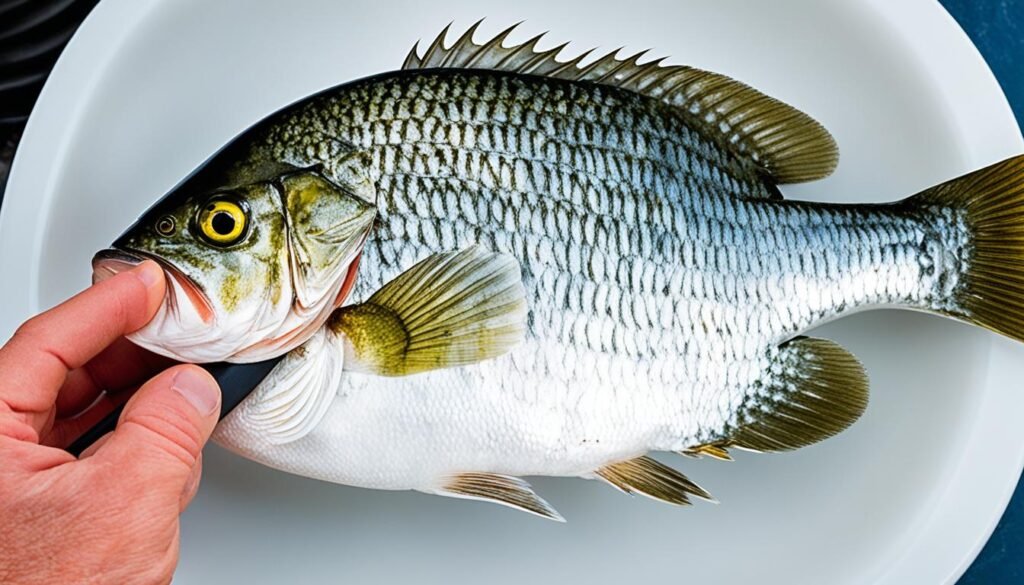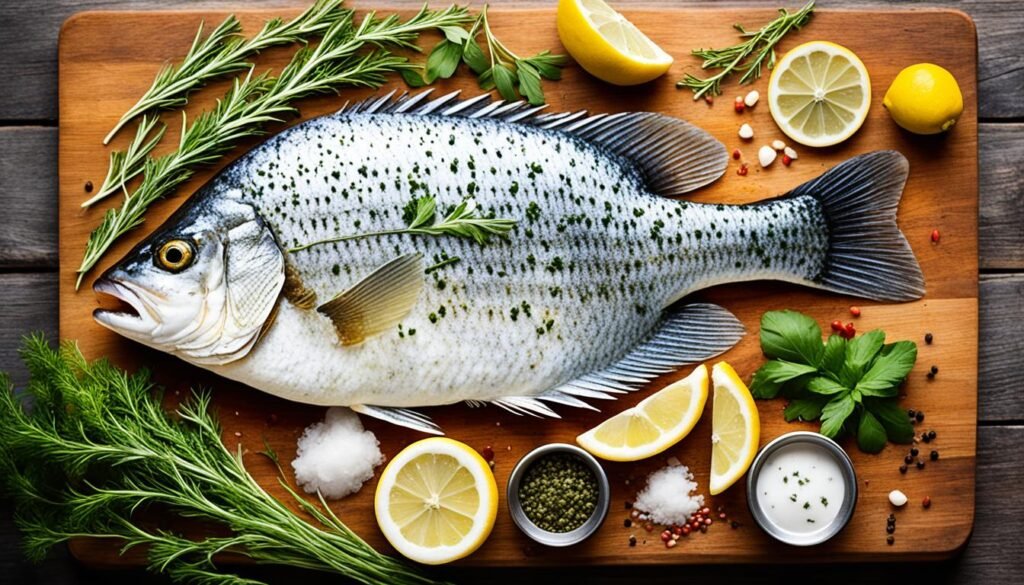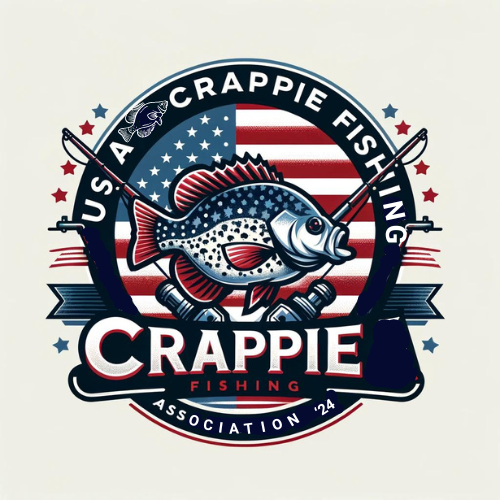Imagine a crisp morning on the peaceful lake, the sound of birds chirping in the distance and the gentle splashing of water as you cast your line. You patiently wait, feeling the thrill of anticipation as you hope for a nibble on the end of your fishing rod. Suddenly, there it is – a bite! You carefully reel in your catch, admiring the gleaming scales and feeling a sense of accomplishment. Now comes the best part – transforming your freshwater catch into a delectable meal.
Delicious recipes for your freshwater catch are the perfect way to elevate your fishing experience. Whether you prefer a simple pan-fried fillet seasoned with herbs and spices or a more complex dish bursting with flavors, there’s a recipe out there to suit every taste.
Join us as we dive into the world of mouthwatering freshwater fish recipes. From easy-to-follow instructions to expert tips and tricks, we’ll guide you through the process of creating delectable dishes using your very own catch. Get ready to savor the flavors of the lake, bringing the joy of fish to your table with every bite.
Key Takeaways:
- Transform your freshwater catch into delicious meals with these recipes.
- From simple pan-fried fillets to more intricate dishes, there’s a recipe for every taste.
- Discover expert tips and tricks to elevate your fishing and cooking experience.
- Enjoy the satisfaction of catching and cooking your own fish from start to finish.
- Create memorable meals and savor the flavors of the lake with every bite.
Understanding Crappie: Species, Behavior, and Seasonal Patterns
Crappies are popular freshwater fish known for their delicious taste and challenging catch. They can be categorized into two species: white crappie and black crappie. Understanding their habitats, behavior, and seasonal patterns is essential for successful fishing.
Crappies tend to congregate around structures like weed beds or submerged timbers, where they find shelter and food. These structures provide a safe haven for crappies and attract small baitfish, which are the primary source of their diet. Knowing where to find these habitats can significantly increase your chances of a successful catch.
The behavior of crappies changes with the seasons, influencing their movement and feeding habits. In spring, crappies move to shallow waters to spawn. They prefer areas with aquatic vegetation and submerged cover for nesting. During this time, they can be found near the shoreline, especially in backwaters or bays.
In summer, crappies tend to move to deeper, cooler waters. They seek refuge from the heat and find comfort in the thermocline, which is the boundary between warm surface waters and cooler lower waters. Fishing deeper structures such as drop-offs, submerged trees, or deeper weed beds can yield better results during this season.
As autumn arrives, crappies transition from deep to shallow waters. They begin to navigate between various depths, utilizing both shallow and deep areas for feeding. Fishermen can target crappies near the shoreline, especially around structures like fallen trees or submerged brush piles.
During winter, crappies may seek deeper, more stable waters. They tend to suspend in deeper parts of the water column, where temperature fluctuations are minimal. Ice fishing can be a popular method to catch crappies during this season, targeting them in deep basins or around structure edges.
The seasonal patterns of crappies not only affect their location but also their feeding habits. They tend to be more active and aggressive during the spring and fall, while their metabolism slows down during the winter and summer months.
Overall, understanding the different species of crappie, their habitats, behavior, and seasonal patterns is crucial for a successful fishing trip. By targeting the right areas at the right times and using appropriate techniques, you can maximize your chances of landing these tasty freshwater fish.
Gear and Tackle for Crappie Fishing
When it comes to crappie fishing, choosing the right gear and tackle can greatly enhance your chances of a successful catch. Here are some essential items you’ll need:
1. Ultralight Rod
An ultralight rod with a length of 5 to 7 feet is ideal for crappie fishing. These rods are designed to be sensitive and flexible, allowing you to detect even the subtlest of bites. Look for a rod that offers a good balance between sensitivity and strength.
2. Lightweight Reel
Pair your ultralight rod with a lightweight reel. A reel with a smooth drag system and a high gear ratio will help you reel in crappie quickly and effortlessly.
3. Test Line
Choose a test line with a strength between 4 to 6 pounds. A lighter line allows for better sensitivity and natural presentation of your bait. However, if you’re fishing in areas with heavier cover, you may need to opt for a slightly stronger line to prevent break-offs.
4. Jigs and Live Bait
Jigging is a popular technique for crappie fishing. Stock up on a variety of jigs in different colors and sizes to match the forage and conditions. Additionally, live bait such as minnows can be highly effective, especially when crappie are finicky or feeding aggressively.
5. Techniques
While there are various techniques for crappie fishing, two commonly used ones are vertical jigging and using bobbers and split shots.
Vertical jigging involves dropping a jig straight down into the water column and bouncing it off the bottom. This technique is especially effective when crappie are suspending around structures like brush piles or submerged trees.
Using bobbers and split shots can help you present your bait at a specific depth. Adjust the length of your leader and the placement of the split shot to find the right depth where crappie are holding.
Experiment with different techniques and adjust your approach based on the conditions and the fish’s behavior.
| Gear | Description |
|---|---|
| Ultralight Rod | An ultra-sensitive and flexible rod between 5 to 7 feet in length. |
| Lightweight Reel | A reel with a smooth drag system and high gear ratio for easy reeling. |
| Test Line | A 4 to 6-pound test line for better sensitivity and natural bait presentation. |
| Jigs and Live Bait | A variety of jigs in different colors and sizes, as well as live bait like minnows. |

Investing in quality gear and tackle and mastering effective crappie fishing techniques will greatly improve your chances of a successful day on the water. So get out there, equip yourself with the right gear, and start reeling in those crappie!
Effective Fishing Strategies for Crappie
Successful crappie fishing requires strategic planning and an understanding of their movements and feeding patterns. By implementing the right crappie fishing strategies, you can significantly increase your chances of a successful catch.
Reading Water and Weather Conditions
One essential aspect of crappie fishing is reading the water and weather conditions. Understanding how these factors influence crappie behavior can help you locate their feeding grounds and improve your chances of success.
When it comes to reading water, look for structures that crappies tend to gather around. These can include weed beds, submerged trees, or brush piles. Crappies use these structures for cover and ambush prey, making them ideal fishing spots.
TIP: Use a fishfinder or polarized sunglasses to help you identify underwater structures and potential crappie hotspots.
Weather conditions also play a significant role in crappie movements. Warm, stable weather tends to make crappies more active and likely to move into shallower waters. Rain and a gentle breeze can trigger feeding activity and create ideal fishing conditions.
Time of Day and Seasonal Considerations
Knowing when crappies are most active during the day can help you plan your fishing trips strategically. While crappies can be caught at any time, early morning and late afternoon into the evening are generally the most productive periods.
During the spring, crappies move to shallow waters to spawn, making it an excellent time to target them near banks and in areas with suitable spawning habitat. In summer, they may move to deeper, cooler waters. Autumn sees crappies transitioning between shallow and deep areas, while in winter, they tend to seek deeper, more stable waters.
TIP: Monitoring local fishing reports and keeping track of seasonal changes can provide valuable insights into crappie movements and behaviors in your area.
Fishing Methods and Techniques
Utilizing the right fishing methods and techniques can significantly improve your chances of catching crappie. Some effective techniques include:
- Vertical Jigging: This involves dropping a jig or bait vertically into the water column and twitching or bouncing it to imitate a small fish or insect.
- Using Bobbers and Split Shots: This technique allows you to suspend your bait at a desired depth or target specific areas where crappies are likely to be feeding.
- Slow Trolling: By trolling at a slow speed with your bait or lure, you can cover a large area of water and attract crappies along the way.
TIP: Experiment with different colors, sizes, and types of jigs, baits, or lures to see what works best for the crappie in your area.
By combining these fishing strategies with your knowledge of crappie behavior and feeding patterns, you’ll be well-prepared for a successful day on the water.
Proper Handling and Storage of Crappie
Properly handling crappie is crucial, whether you plan to release them back into the water or prepare them for a delicious meal. Ensuring their health and vitality is essential for catch and release fishing, and proper handling techniques can help you achieve that.
- Handle the fish gently: To preserve the well-being of the crappie, handle it with care. Use wet hands or a rubberized net to avoid damaging the fish’s protective slime coating, which helps protect them from diseases and parasites.
- Follow catch and release techniques: If you’re practicing catch and release, make sure to minimize the time the fish is out of the water. Avoid unnecessary handling and try to release the crappie as quickly as possible to improve its chances of survival.
If you’re planning to cook the crappie for a mouthwatering meal, it’s important to maintain its freshness from the moment it’s caught.
Proper handling of crappie preserves its taste and texture, ensuring a delightful dining experience.
Cleaning and filleting the crappie shortly after catching is a recommended practice to maintain its freshness. Removing the entrails and rinsing the body cavity helps preserve the quality of the fish. Once the crappie has been filleted, it’s crucial to store the fillets correctly to prevent bacterial growth.
Here are some essential tips for storing crappie:
- Refrigerator storage: Place the fillets in a plastic storage container or wrap them tightly in plastic wrap or aluminum foil. Store them in the refrigerator at a temperature of 40°F or below.
- Ice storage: Another option is to place the fillets in a sealed bag and store them on ice in a cooler. Make sure the ice is kept at or below 40°F to maintain the fish’s freshness.
By following these proper handling and storage techniques, you can ensure that your crappie remains fresh and maintains its delicious flavor until it’s time to cook or release it.
Cleaning and Filleting Crappie
Cleaning and filleting crappie is an essential step in preparing these delicious fish for cooking. Follow these simple steps to ensure your crappie are ready to be transformed into mouthwatering meals.
- Rinse the crappie thoroughly in cold water to remove any debris.
- Make an incision from the underside of the fish’s jaw down to its belly.
- Remove the entrails and rinse the body cavity to ensure cleanliness.
- To fillet the fish, make a cut behind the gill cover down to the backbone.
- Slice the fillet off the side of the fish, following the natural shape of the body.
- Repeat the filleting process on the other side of the fish.
- If desired, remove the skin from the fillets.
Now you have perfectly cleaned and filleted crappie, ready to be used in a variety of delicious recipes.
Crappie Fillet Recipes
Once you have filleted your crappie, the options for cooking them are endless. Here are a few mouthwatering recipes to inspire your culinary adventures:
“Pan-Seared Crappie with Lemon Herb Butter”
“Crappie Tacos with Mango Salsa”
“Baked Crappie with a Pine Nut Crust”
Combine your freshly filleted crappie with these flavorful recipes to create a memorable dining experience. The possibilities are truly endless when it comes to cooking crappie!

Cooking Your Crappie: Delicious Recipes for your Freshwater Catch
Now comes the fun part – cooking your crappie! From traditional pan-fried fillets to more creative dishes, there are endless possibilities when it comes to preparing crappie.
One mouthwatering option is the pan-seared crappie with lemon herb butter. The zesty flavors of the lemon and herbs perfectly complement the delicate taste of the crappie. For a burst of freshness, serve it with a side of mixed greens.
If you’re looking for a tangy and tropical twist, try making crappie tacos with mango salsa. The combination of the flaky crappie, sweet and juicy mango, and spicy jalapenos creates a symphony of flavors that will delight your taste buds.
For a more elegant and flavorful dish, consider baked crappie with a pine nut crust. The crunchy crust adds texture and nutty notes to the tender crappie fillets. Pair it with a light lemon-dill sauce and steamed vegetables for a well-rounded meal.
Don’t be afraid to explore different cooking methods to find your favorite way to enjoy this delicious fish. Try grilling crappie fillets for a smoky flavor, stuffing them with a combination of herbs and breadcrumbs for added complexity, or stir-frying them with vibrant vegetables for a quick and tasty meal.
Remember, the key to cooking crappie is to enhance its natural flavors without overpowering them. With these recipes and techniques, you can transform your freshwater catch into a culinary masterpiece that will impress even the most discerning fisherman.

Cooking Methods for Crappie
| Cooking Method | Description |
|---|---|
| Pan-Frying | A classic method that results in crispy, golden-brown fillets. |
| Grilling | Infuses the crappie with a smoky flavor and beautiful grill marks. |
| Stuffing | Filling the crappie with a mixture of herbs, breadcrumbs, and other ingredients adds complexity. |
| Stir-Frying | A quick and flavorful way to cook crappie with vibrant vegetables. |
Tips and Tricks for Cooking Fish at Home
Cooking fish at home can be intimidating, but with a few tips and tricks, you can create restaurant-quality dishes in your own kitchen. Fish is a versatile ingredient that can be enjoyed in a variety of delicious ways. Here are some valuable fish cooking tips to help you elevate your culinary skills:
Choose Fresh Fish
When cooking fish, freshness is key. Look for fish that has bright, clear eyes, shiny skin, and a mild smell of the ocean. Avoid fish with dull eyes, fishy odors, or slimy textures. Fresh fish will ensure the best flavor and texture in your dishes.
Experiment with Spices and Herbs
Spices and herbs can enhance the natural flavors of fish. Experiment with different combinations to find your favorite. Popular options include lemon pepper, garlic, dill, parsley, and thyme. Be careful not to overpower the delicate taste of the fish, but rather complement it with the right balance of seasoning.
Add Another Protein to Complement the Fish
Pairing fish with another protein can create a more satisfying and well-rounded meal. For example, serving grilled salmon with a side of shrimp or topping baked tilapia with grilled chicken. This combination adds depth and variety to your dish.
Try Different Cooking Methods
Explore different cooking methods to bring out different flavors and textures in your fish dishes. Grilling, baking, broiling, and stir-frying are all great options. Each method provides a unique cooking experience and can elevate the taste of your fish.
| Fish Cooking Methods | |
|---|---|
| Grilling | Great for thicker fish fillets and whole fish. Adds a smoky flavor and creates charred grill marks. |
| Baking | Works well for delicate fish. Baking in foil or parchment paper helps retain moisture and flavors. |
| Broiling | Quick and intense cooking method. Perfect for thinner fish fillets that need a crisp texture. |
| Stir-frying | Best for bite-sized fish pieces. Cooks fish quickly with high heat, resulting in a deliciously tender texture. |
With these tips and tricks in mind, you’ll be able to create flavorful and impressive fish dishes right in your own kitchen. Don’t be afraid to get creative and experiment with different flavors and techniques. The possibilities are endless when it comes to cooking delicious seafood recipes!
Fish to Table: The Joy of Freshwater Catch
There is something incredibly satisfying about catching your own fish and transforming it into a delicious meal. The “fish to table” experience allows you to appreciate the process from start to finish and enjoy the full freshness and flavor of your catch. Whether you’re a seasoned angler or a beginner fisherman, trying out new recipes and cooking techniques can enhance your fishing experience and make mealtime even more enjoyable.
Embrace the joy of cooking fish at home with these easy fish recipes that highlight the natural flavors of your freshwater catch. From simple pan-seared fillets seasoned with herbs and spices to grilled fish tacos topped with zesty mango salsa, there are endless possibilities to explore.
One of the benefits of cooking fish at home is the control you have over the ingredients and flavors. You can experiment with different marinades, sauces, and seasonings to create a dish that suits your taste preferences. Whether you prefer a light and refreshing citrus glaze or a bold and spicy Cajun rub, the choice is yours.
Preparing and cooking your own fish allows you to tailor the flavors to your liking, ensuring a satisfying and personalized dining experience.
Another advantage of cooking fish at home is the opportunity to try new cooking techniques. Have you ever considered baking fish with a pine nut crust or stir-frying it with fresh vegetables? By attempting different cooking methods, you can expand your culinary repertoire and discover new ways to enjoy your freshwater catch.
Not only is cooking fish at home a delicious experience, but it also provides numerous health benefits. Fish is a rich source of high-quality protein, omega-3 fatty acids, and essential nutrients. By including fish in your diet, you can support heart health, improve brain function, and boost overall well-being.
So, the next time you head out for a fishing trip and bring home a freshwater catch, embrace the “fish to table” journey. Explore easy fish recipes, experiment with different flavors and techniques, and savor the joy of transforming your own catch into a delectable meal. Cooking fish at home has never been more rewarding. Happy fishing and happy cooking!
Conclusion
Fishing for crappie and cooking your freshwater catch can be an incredibly rewarding experience. By understanding the behavior of crappie, selecting the right gear and tackle, and employing effective fishing strategies, you can greatly increase your chances of a successful catch. It’s not just about catching fish; it’s about the thrill of the chase and the satisfaction of bringing home a delicious meal.
Proper handling and storage of crappie are crucial to maintain the quality of your catch. Treat the fish gently when practicing catch and release, ensuring their health and vitality. For those planning to cook their crappie, clean and fillet them promptly after catching to preserve their freshness. Keeping the fillets in the refrigerator or on ice at a temperature below 40°F will prevent bacterial growth and maintain their quality.
When it comes to cooking your crappie, the possibilities are endless. There are countless delicious recipes to experiment with, from traditional pan-fried fillets to more creative and elaborate dishes. Grilling, stuffing, and stir-frying are just a few of the techniques you can utilize to create mouthwatering meals. So grab your fishing gear, head out to the water, and get ready to enjoy the delicious rewards of fish to table dining.
